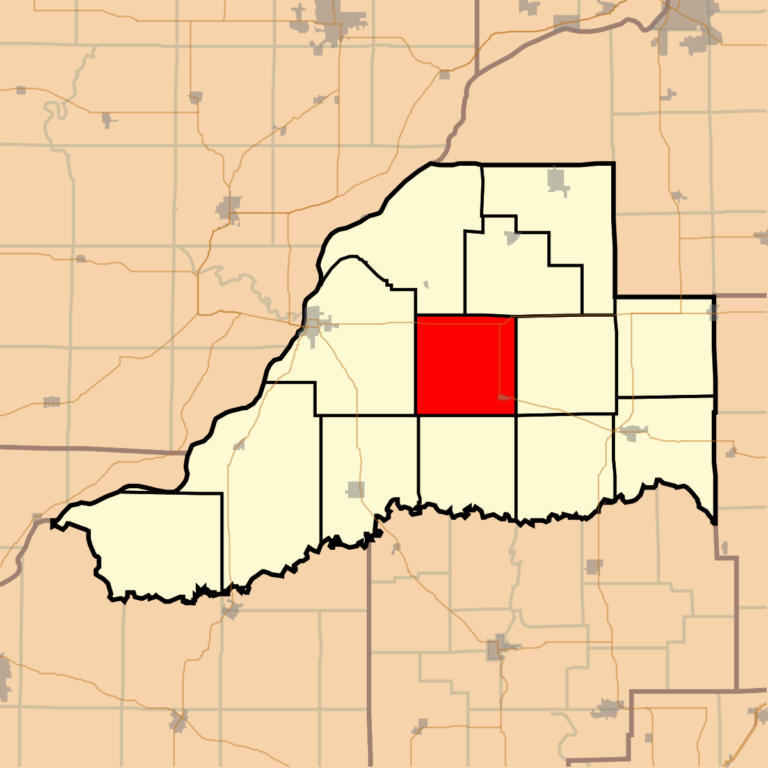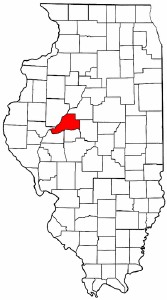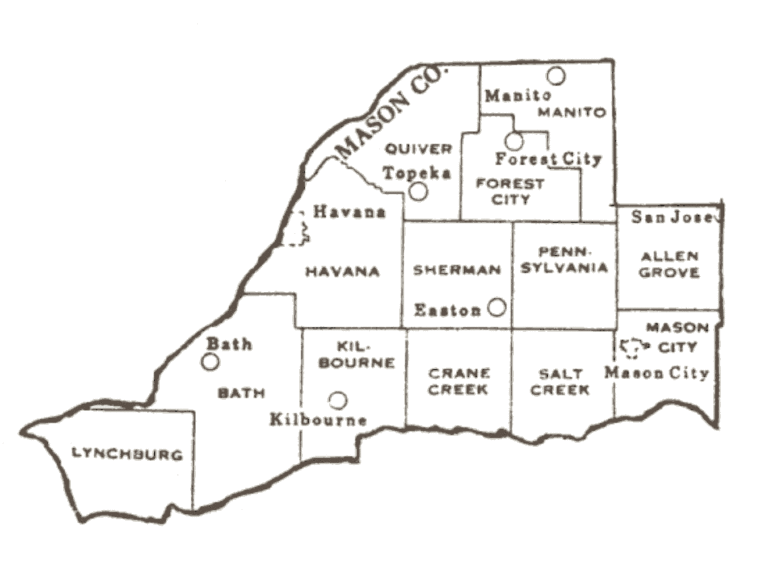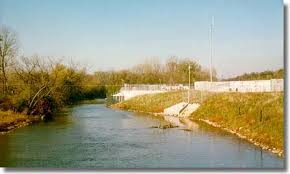Crane Creek History pt 2
The year 1834, witnessed the arrival of Henry Sears. He was born nearRaleigh, N. C., and with his parents came to Kentucky in an early day. In 1822, he came to the State of Illinois. He lived in various localities, most of the time, however, in Menard and Sangamon. In 1834, as stated, he came to Walker’s Grove and purchased the improvement of James Estep. This he sold to James Walker in 1837, and the following spring moved to his present place of residence, on Section 17, in Crane Creek Township. He is one of the few ancient landmarks yet remaining. In the forty-one years of his residence in this one place, he has, by legislative enactment, been made a citizen of Sangamon, then Menard, and finally, Mason County, without once changing his location. While the eccentric manners of the man have contributed, somewhat, to his notoriety among the early settlers (and the later ones, too, for that matter), no one can be found who would gainsay the veracity of any statement he might make in good faith.
Seeing the folly of dram-drinking exemplified in the life of his father, he has led a life of strict sobriety, and largely to this is, doubtless, due the fine state of mental and physical preservation in which we find him to-day. He was a member of petit jury for the first term of the Circuit Court ever held in Mason County. Not far from his residence was the site of the once famous Mount’s mill, an institution in its day, and the “pocket distillery,” both of which are fully described in the general county history. Abner Baxter, from Kentucky, settled at the grove soon after the coming of Sears. He remained but a year or two before selling out and moving to another portion of the county. He was an important factor at a “hoe-down,” as he could handle a ‘ fiddle ” and evoke such sweet strains of music as are wont to charm and edify the backwoodsman. He was honored as early as 1844, with a seat on the Board of County Commissioners. The year 1836 added Jesse Baker, a brother-inlaw of Sears, to the settlement. Mr. Baker, at the advanced age of eighty- . one, is still living, just across the line in Kilbourne Township. He was from Tennessee, and was a perfect Nimrod in his day. He has, perhaps, brought down more deer than any other citizen of the county, as he is said to have been an unerring marksman, and to have slain great numbers of them each fall.
Alfred Summers came from Kentucky and settled on the farm now owned and occupied by Henry Sears, a short time after Baker made his claim. He died in October, 1837, and his death was one among the earliest to occur in the adult population of the township. Passing backward in our note of time, we find the year 1835 records the coming of Josiah Dobson, John Close and his sons, George, John Jr. (or Jack, as he was familiarly known), and Turner. These were all from Kentucky, and settled in the region of Crane Creek. The old gentleman and his son Turner remained citizens of the vicinity in which they settled till the date of their decease. John Close, Sr., died a number of years ago, and in buried on the farm now owned the Widow Carter. Turner died in 1863, having amassed, during life, considerable means, much of which has found its way into the pockets of attorneys as fees for their services in the litigation of various matters. George, after a short term of residence, moved across the Sangamon, and thence to Iowa. Jack moved to Morgan County, and, after the loss of his companion, returned and located in Havana. Some years later, he took up his residence in Shreveport, and has since died.
In 1837, James Walker, from Dearborn County, Ind., came and purchased a large tract of land in what, at that date, was called Price’s Grove, but to which we have often referred as Walker’s Grove, a name it has borne since the date of his coming. Here he lived and reared a family, which has been largely identified with the earlier and later interests of the county. He built the first frame house in this entire region of the county. The closing years of his life were spent as a citizen of Havana, in which city he died at an advanced age.
Robert Gavin, from South Carolina, is thought to have settled in the township in 1837. Of him but little record can be made, as he did not remain long, and his place of removal cannot be determined. Charles and John Haynes, from North Carolina, became citizens of Crane Creek in 1838. They are still largely represented in the township. As early as the close of 1839, Isaac Teeters, George and Hiram Walker, Huff Hines, Henry Norris and Lemuel Pelham were settlers here. Teeters came from St. Clair County, and, leaving his residence here, moved with his family to Texas. Hiram Walker, after a few years’ sojourn, moved to Greene County, 111., where he died some years ago. Henry Norris was from Barren County, Ky., and was the brother of Solomon Norris, who was among the first settlers of the township. Hines was a man who made for himself little or no reputation, an easy-going fellow, who, at this date, but few remember.
Lemuel Pelham, however, was of a different character. He was a Buckeye by birth, if full credence might be given to his state- ment in regard to his birthplace. He was one of those rare exotics upon which, after the lapse of long intervals, the early settlers were permitted to gaze. He was one of those who, to use Uncle Henry’s expressive phrase, “shackled round” from place to place, and, from the various localities in which he had lived, and the length of time spent in each locality, Mr. Sears thinks, must have been not less than one hundred and fifty years of age at the time of his settlement here. Thoroughly wedded to his migratory habits, he did not remain long, and no trace of him has been kept by those who once knew him since his removal from their midst. He is thought, however, to have gone to St. Clair County, where, a number of years ago, he made his final exit from terra firma. 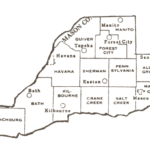
Asher Scott, from New Jersey, settled about the last-mentioned date, possibly a year earlier, in the northwest corner of the township and is still living. His brother Martin accompanied him, but settled across the line in what is now Sherman Township. During the year 1840, Charles Veach, Elijah Riggin, Ensley Hall and John Fumphelan were added to the population of this portion of the county. Veach was from Delaware, and settled where Eli C. Cleaveland now lives. He lost his life, in 1851, by the accidental caving-in of a well, which he was engaged in sinking. Riggins was a ” Sucker ” by birth and settled in the northeast corner of the township, where a number of the family, in comfortable circumstances, still reside. Ensley Hall came from Tennessee to Menard County, thence to Mason, and, after one year, again located in Menard. Fumphelan, as his name implies, was from ” der Faderland.” He located southeast of where Henry Sears now lives, on land owned by J. H. and E. C. Cleaveland. He was a quiet, inoffensive, well-meaning Dutchman, who, after a few years’ residence, moved away, and all further trace of him has been lost.
Rev. John L. Turner, from Kentucky, a minister of the Baptist denomination, made a settlement near the present residence of James L. Hawks, in 1840. He was a minister of fine ability, and served the county in important offices, as the records testify. His death occurred twenty-odd years ago. The same year, Samuel C. Conwell came to the grove ; he is a native of Delaware, but was reared from early boyhood in Indiana, He was a young man of prepossessing appearance, and, as the cut of his garments and style of manners differed materially from those of the pioneers by whom he was surrounded, and with whom he was in almost daily contact, he soon discovered that he was growing into general disfavor. Coonskin caps, buckskin breeches and moccasins was the ordinary apparel, at that day, among the early settlers. Con’s dress indicated a more advanced stage of civilization and refinement, and he soon acquired to himself the distinction of “that d d Yankee,” throughout the settlement.
He was here as the agent of some fine stock, the property of his brothers-inlaw, and a sharp trade or two served to bring him prominently before the brist- ling bar of justice. In no instance, however, was he convicted on the charges preferred, the failure of which led Jesse Baker to exclaim, ” It is not worth our while to bother longer with this Jerusalem over-taker, since we cannot convict him of anything.” ” Con ” says a residence of forty years among this people has not served to make him Governor, simply on account of the bad impression he made in an early day. His connection and prominence as the first man in the county to introduce improved agricultural implements, has been fully noticed in the general county history.
The years 1841-42 brought in Henry Seymour, James H. and Joseph Norris, George Hall, Christian, Trueman and Harvey Stone. The Norrises were from Kentucky, and settled near the north line of the township. Joseph moved to Texas a number of years ago, where he soon after died. George Hall purchased the James Walker farm at the grove, where he still resides. The Stones were from the Buckeye State. Christian and Trueman were brothers, while Harvey was their uncle. The latter, after a few years, went back to Ohio ; Christian moved to Iowa, and from there to Missouri ; Trueman is still a resident of the township. Henry Seymour was from Germany, and died in the vicinity in which he settled, a number of years ago. Samuel Neely, with his sons, William, John, George and James, came from Tennessee and settled in this section in 1844-45. Two or three of the families are still living here.
Harvey B. Hawthorne was here in 1846 ; he was born in Kentucky and is of Scotch descent. The name originated during the war between the Scots and Danes, which was continued through a period of more than one hundred years. The Scots, when vanquished on the plains and in the valleys, fought their invaders from the hawthorn brush and groves, within the mountain fastnesses, and from these circumstances, the name of the shrub passed to that of a family. Mr. Hawthorne is still a citizen, and has been very successful in his various enterprises. The same year, a number of the Tomlins settled in the northeast cor- ner of the township, many of whom still reside there. As early as 1850, Allen Robinson and James L. Hawks became denizens of Crane Creek. Robinson was from New Jersey, and came to Menard in 1846. In 1849, he settled in Walker’s Grove, on the farm once owned by Solomon Norris ; here he at present resides in affluent circumstances. Hawks was from Kentucky, and has been a continuous resident since his first settlement. Upon the formation of the township, he was chosen to the office of Supervisor, a position in which he has served his fellow-citizens twelve or thirteen years. Elisha T. Davenport came from Kentucky to what is now Mason County, in 1831, but did not become a citizen of Crane Creek Township prior to 1849 ; he resides on Section 9, and is one of the substantial, well-to-do farmers of this section. Others there are, doubtless, who were settlers in this division of the county as early as 1850, and whose names, in justice to all, should be mentioned; but that omissions will of necessity occur, we confidently believe, will be readily granted by any one who will undertake to trace the early history of a township in which the settlements began as early as those in Crane Creek. Having taken this somewhat hasty glance at its early settlement, we next pass to notice some other matters of interest connected with its history.

